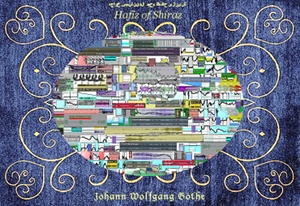Arsenije
Jovanovic has produced a new radio work, which superimposes traditions
of narration and music of European and Arabic cultures. He compares his
composition technique of “East-West Wind Dialogues” with
the weaving of a Persian rug, unfolding a cross-cultural sonic universe.
Artist’s statement:
”East-West
Wind Dialogues” is an acoustic and textual tapestry with several
layers that complement each other in the course of the story. It is
composed on the model of traditional carpet weaving in the Middle East,
where the author spent some time collecting the music and occasionally
studying the art of weaving colored threads into a fixed warp.
In
”East-West Wind Dialogues” the author follows, as much as
possible in so different media, the technique of traditional
hand-knotted Middle East carpet making. Thousands of short audio files,
words, or part of verses, taken from two poetry giants, Hafiz from
Shiraz and Johan Wolfgang Goethe, are intertwined and intersected in
the acoustic weft of the piece. Its structure, similarly, was
previously composed of musical fragments from traditional Iranian music
as well as from some European musical tradition. The first, with rare
exception, created by numerous - known but mostly anonymous Iranian
artists, inspired by the poetry of Hafiz and performed like sung
verses or in instrumental form - the second inspired by Goethe's poetry.
Two
coextensive dialogues of two poetic expressions run through "East-West
Wind dialogues". Different in their forms but identical, or at least
related in their deeper essence. The dialogues between the two musical
hemispheres being very different, often extreme, in their musical and
acoustic forms. Because of these differences, the author adapts these
different musical forms to each other, searching for a new and more
attainable musical harmony between the two.
In
the use of the texts - with few exceptions - the author does not insist
on the semantic content of the poetry. He searches for poetry in the
manner an observer sizes the rare remains of an ancient archaeological
ruin trying to capture an image which is no longer physically
there. Like in the scenery of a rich Persian rug, the colourful detail
or interesting decoration illuminate the entire image.
|


